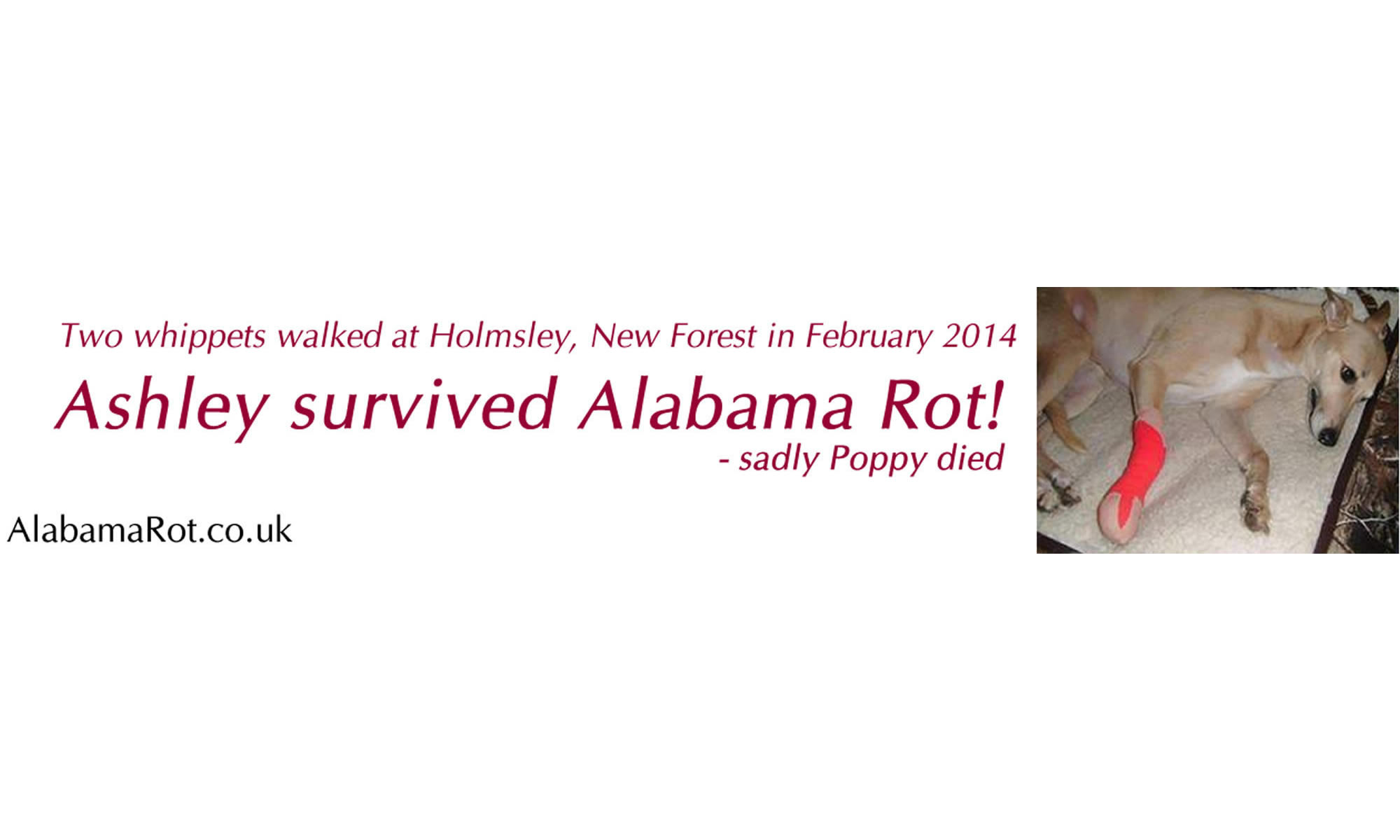Non azotaemic cutaneous and renal glomerular vasculopathy/Alabama Rot – Advice Sheet for Vets
Below AlabamaRot.co.uk have an unedited transcript of the Advice Sheet for vets, from Anderson Moores Vet Specialists:
“Non azotaemic cutaneous and renal glomerular vasculopathy/Alabama Rot – Advice Sheet for Vets
Given recent interest in cutaneous and renal glomerular vasculopathy (CRGV) in the media and on social networking sites, you may have been presented with a dog with a skin lesion of unknown cause and wondered whether the lesion could be compatible with CRGV. As there is no ante mortem test for this disease, we would like to provide you with some useful information.Current evidence suggests that the median time to development of azotaemia from the onset of a skin lesion is 3 days (range 1-10 days) and in these dogs, 50% are thrombocytopaenic at presentation, 30% are hyperbilirubinaemic and 20% are anaemic. However, there appear to be a subset of dogs that develop a skin lesion(s) without ever developing azotaemia (non azotaemic CRGV). Historical information suggests that a proportion of these dogs have pre azotaemic renal injury as assessed by glomerular filtration rate (GFR) measurement and histopathological findings.
The appearance of skin lesions is variable although often the lesions are deemed atypical compared to a usual 1st opinion dermatology case load (see below).
If you are presented with a dog and you are concerned about the possibility of CRGV, and the dog is non azotaemic, then the following options could be considered:
– GFR measurement at your practice to assess for the presence of pre azotaemic renal injury with results available within 24 hours. The laboratory fees and postage associated with this test are free. Please contact us if you wish to discuss this further. This result may help to guide decision making.
– Fluid therapy (with or without prior GFR measurement). We have no evidence either way to dictate if fluid therapy prior to the development of acute kidney injury changes outcome in the euvolaemic patient.
– Discharge from the clinic with repeat creatinine and urinalysis +/- platelet count after 24-48hours
– Discharge with no follow up
We would suggest that non-steroidal anti-inflammatory drugs are avoided in suspected CRGV cases. Antibiotics may be appropriate if the skin lesion appears to be secondarily infected. Referral should be strongly considered in azotaemic, suspected CRGV cases. We are always happy to discuss cases on an individual basis.
Please see our Facebook page for regular CRGV updates.” (Source: Anderson Moores)
Published: 07-06-2015
